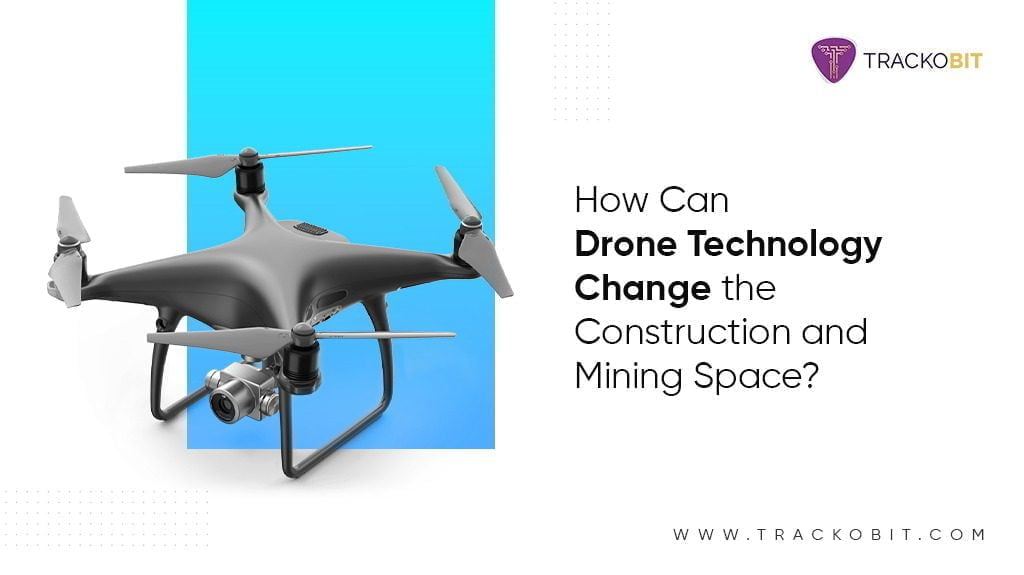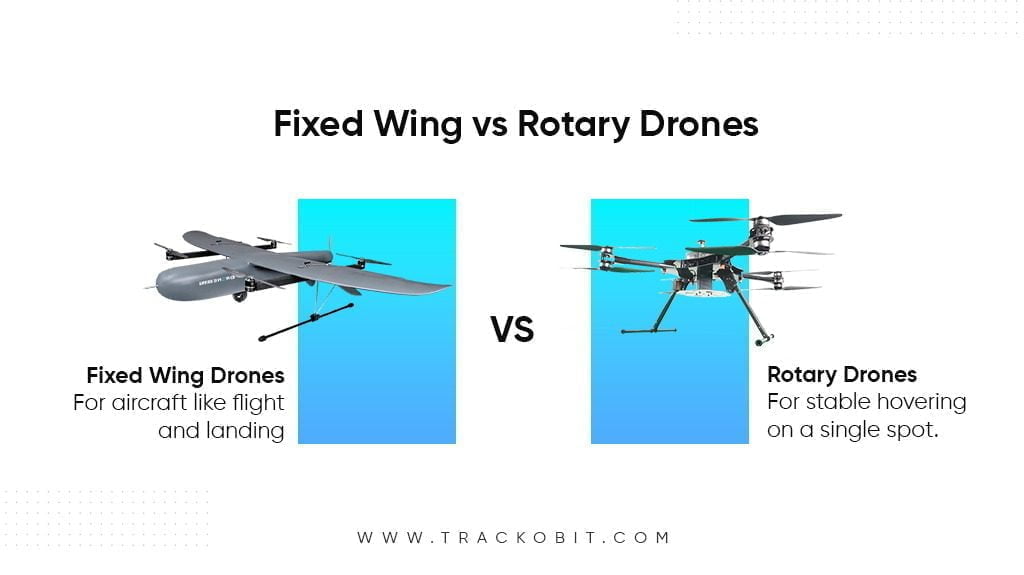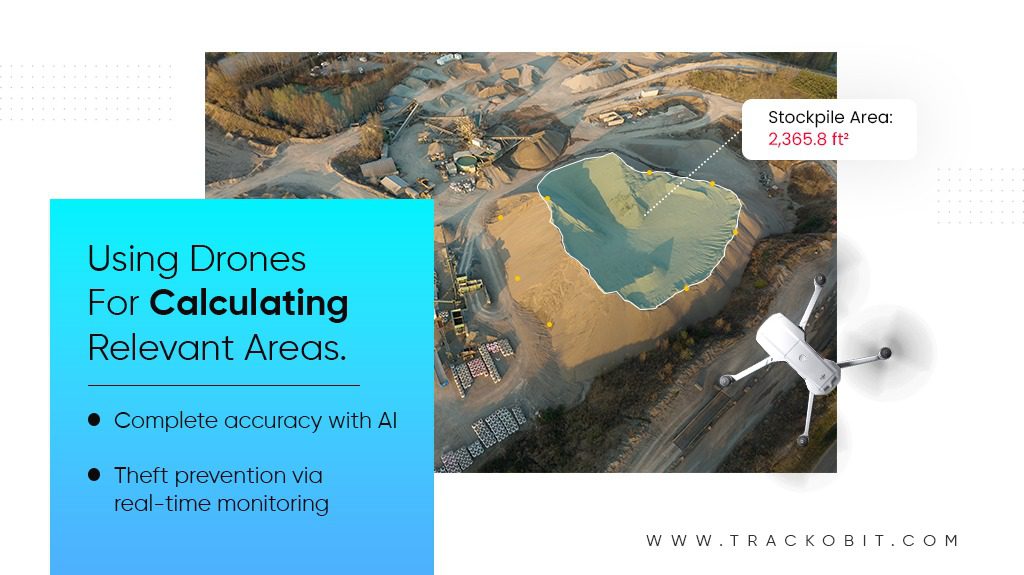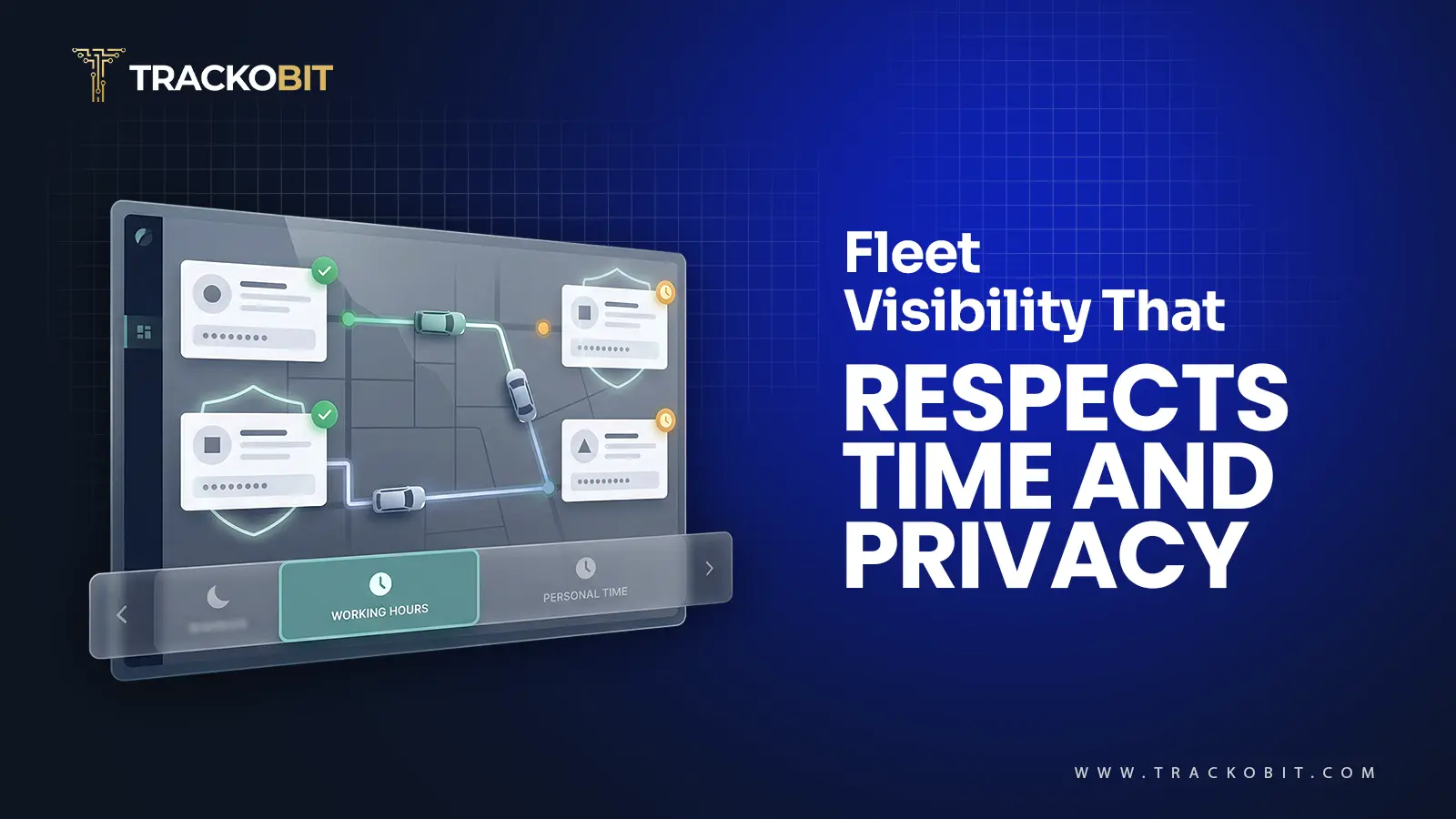-
TrackoBit
Manage commercial vehicles with the new-age Fleet Management Software
TrackoBit -
TrackoField
Streamline your scattered workforce with Field Force Management Software
TrackoField -
Features Resources
-
Blog
Carefully curated articles to update you on industrial trends. -
White Paper
Insightful papers and analysis on essential subject matters. -
Glossary
Explore an alphabetical list of relevant industry terms. -
What’s New
Get TrackoBit & TrackoField monthly updates here. -
Case Study
Explore the cases we solved with our diverse solutions. -
Comparisons
Compare platforms, features, and pricing to find your best fit.
-
About Us
Get to know TrackoBit: our team, ethos, values, and vision. -
Careers
Join the most dynamic cult of coders, creatives and changemakers. -
Tech Support
Learn about our technical support team and services in detail. -
Events
Check out the exhibitions where we left our marks and conquered. -
Contact Us
Connect with us and let us know how we can be of service.
How Can Drone Technology Change the Construction and Mining Space?
- Author:Drishti Dua
- Read Time:8 min
- Published:
- Last Update: June 25, 2025
Table of Contents
Toggle
The picture we have of the future certainly includes several kinds of machines that can help us grow via automation. As we are headed towards said future, several kinds of inventions are coming up, streamlining industries and making operations easier than ever.
Table of Contents
Toggle
Unmanned Aerial Vehicles (UAVs), popularly known as drones have already started being used for optimising various industries. This is why the drone industry is expected to grow at 15.37% CAGR over the next five years.
For industries often dealing with safety hazards, drones can be a big step in revolutionising their operations. While promoting safety, they also help businesses adopt automation for ease and accuracy.
What are Drones?
Before we try and understand the ways drones are changing several industrial operations, it is important that we get familiar with these devices. So what are drones, and what are their functions?
Drones are unplanned aircraft, i.e flying robots that are controlled externally. This means that the driver using these devices is actually operating remotely. Very often, drones are also connected to a software-controlled system that has the capacity to drive several drones at the same time.
With the help of tracking software, businesses can use drone technology to operate remotely, even if out of the driver/manager’s sight. These drones are often called BVLOS (beyond visual line of sight) drones.
What are the Functions of Drone Integrations?
Drones can be very multi-dimensional in their functions because of their integrating nature. Imagine if drones are a blank canvas, integrating other hardware with them can elevate their use in the industry they are working for. Some of the hardware that helps drones become a multi-purpose asset are:
- Cameras: With the help of cameras, drones become the perfect surveillance tool useful for safety management. Business managers can keep track of their projects even from remote areas, saving them time previously spent in manual management.
- Sensors: With the help of sensors, managers can improve their data collection, ultimately helping them make better decisions. A common example of this is the use of sensors in smart agriculture which helps determine the soil quality and also irrigation requirements based on water levels.
- GPS Tracker: To keep track of the drone at all times, it is important that business owners integrate a GPS tracker into their devices. This opens up the opportunity for the managers to track their drones in real-time even from remote areas.
What are the Types of Drones Available in the Market?
Drones as we see them today are divided into two major categories. Both are used for different reasons, their use, looks and functionality vary as well. Let us look at the kinds of drones that can help businesses optimise their operations:
- Fixed Wing Drones: These drones are a close but smaller rendition of aircraft. As the name suggests, they have two wings that help take them flight and land properly. They have the capacity to reach higher altitudes than any other drone, helping in the mapping of topography and surveilling a larger area. But this kind of drone design limits it to fly forward only, making it inefficient in tight spaces or areas with several obstacles.
- Rotary Drones: Due to their design, rotor drones have the ability to hover over a single spot and remain stable. They can be used for surveillance over a single place/person, making them a widely adopted device in industries that require aerial inspection, photography, and structural scan over short distances. They are the best option for businesses that need supervision closer to the ground or in areas with obstacles.

Ways to Use Drones: Construction Industry
We mentioned above that drone technology can be useful in streamlining industries that are known for their dangerous operations. What better sector to optimise than one with heavy-duty equipment and materials that need constant supervision for accurate project execution?
The construction industry is expected to undergo several changes in the upcoming years. Many of these trends revolve around the idea of adopting technology for fewer obstacles in the execution of tasks. Let us look at ways drones are helping speed this process:
-
Mapping out Topography
Complex construction projects with widespread areas are becoming the new norm. But having a couple of managers physically inspect and understand the kind of site they are dealing with geographically can be wasteful and error-prone. It can also be considered a waste of manpower, as several managers will have nothing to do but supervise their employees
Drones can efficiently resolve this issue. With the use of cameras, managers can not only live stream but also save the footage of their land survey. Thus, business owners can plan their progress and design based on this data.
-
Heavy-duty Equipment Tracking
Several kinds of off-road machines are employed in construction areas. They can range from material-carrying vehicles to cranes for heavy-weight lifting. But assigning people solely for the purpose of ensuring the safety of these machines can negatively impact the business’s overall productivity.
Rotary drones can be a good partner for such issues. They can make note of the equipment and managers can ensure that their machines are performing well from time to time. It can also eliminate the risk of theft. Managers can ensure that the vehicle/part of the machines does not get pilfered.
Scheduled flyovers can also help managers reduce any accidents by detecting instances where any equipment is coming close to colliding with other obstacles on the site. It can also prevent businesses from falling prey to equipment malfunction. They store visual proof of such instances that make communication about such issues very easy.
-
Progress Monitoring and Reporting
Drones can ensure that business managers can see the live progress of their construction projects. They can find any loopholes that might be responsible for low productivity and eliminate them for smoother operations.
Drones can also aid communication with clients. This is because managers can directly send clips and images of the project’s progress to the clients instead of wasting time on physical visits. It makes it easier for architects, designers and other teams to ensure that the execution is what they imagine the site to look like and get their input on any spontaneous decisions.
-
Maintaining Security
Theft is a major issue in any construction business. From threat to equipment to the raw material. It can be very damaging to the company’s budget. This is why drones can use motion detectors with their cameras. Thus, any suspicious activity gets mitigated with the help of this system.
Ways to Use Drones: Mining Industry
Moving on to the next industry that is slowly shifting to the use of drones is the mining industry. With the danger quotient being even higher for this industry, it is no surprise that technology is taking over to help businesses mitigate issues related to the safety of their employees and resources. Let us look at ways this the drone technology is facilitating this shift for safer operations:
-
Mine Exploration
Exploring the land to determine if the site is accessible or devising a plan to access the resources in a mine are very important but also filled with challenges. This is why businesses must utilise their drones to map out areas for the possibility of mining without endangering their labour force. Drones can also provide managers with an area map that can be used to plan out the mine’s structure.
-
Hazard Identification
In a functional mine, mangars need to regularly look for signs of hazards. After all, India recorded a total of 377 deaths due to mining accidents in mere three years. To tackle such high figures, industry experts need to look for ways to detect calamities before they occur. Constant drone supervision can help detect potential accidents or mine explosions well in advance. Thus, helping evacuate the area without endangering the employees working on these sites.
-
Underground Supervision
Mines operate underground, which are usually areas not easily accessible to humans. Inspecting this area for mineral reception and understanding the project plan can be a difficult task, endangering people that are forced to get to these reserves via tiny openings. But this problem is easily solved with the help of small-sized drones. Managers can integrate light with these devices and record the existing mine condition for planning.

-
Stockpile Management
Once the goods are extracted, the next challenge is to store them properly. Theft at this step is not only simple but can lead to several challenges. This is why drones are a good aid to have around. With HD cameras, they can help managers calculate their stockpile area and make theft detection easier. Changes in stored goods’ area cannot go unnoticed under the eye of the AI cameras.
How Can Businesses Manage Their Drones?
Businesses that use fleet management systems already have control over half the challenges that drone technology might present to their operators. With its custom interface and flexibility towards integration, it is very easy for fleet managers to not only track their drone’s location but also keep track of the data they collect.
The first step to managing drones systematically is to build a comprehensive and secure system that allows managers to track their devices. Sounds familiar? Asset tracking solutions are a part of the fleet monitoring software that helps fleet managers track their consignments and cargo. The system can also help managers track drones’ location and prevent any kind of theft attempts. This extra layer of security becomes essential in the face of the high purchase cost of drones.
Data is the foundation for better decision making. This is why the cloud-based storage model used by fleet management systems ensures managers can access their drone data for longer periods. This makes the optimisation process seamless as construction and mine owners can pinpoint the exact reason behind inefficiency. Some of the data often used in partnership with drones include:
- Live streaming: The cameras attached to drones save their surveillance footage with the system. Thus, managers have access to the playback at all times. This is beneficial in the investigation process if there is any detection of theft.
- Productivity Reports: It is very important to monitor the working hours of drones. Overworking such machinery can lead to damage. The system can formulate reports based on the drone’s activities so that managers can schedule their work keeping their health in mind.
Why TrackoBit can Become Your Best Investment
Drones are the next big thing for several industries. The construction and mining industries too are no strangers to the use of drones for surveillance. But we have come a long way from the basic security operations that drones were intended to play traditionally.
The onset of AI and automation has become the foundation for drones to become devices that reduce human risk operations instead. This makes them an essential investment in the coming future. So why not stay ahead of the trend and take this step right away?
Drishti Dua, a Content Contributor at TrackoBit has a rich background in literature and professional expertise in SaaS and technology writing. She has carved her niche in the space of Geospatial techn... Read More
Related Blogs
-

When Tracking Needs a Clock: Rethinking Fleet Visibility
Tithi Agarwal December 24, 2025Read on to understand why fleet tracking works better when it follows working hours. Because visibility should support operations, not…
-

What Makes TrackoBit’s Video Telematics Software Truly Next-Gen?
Shemanti Ghosh December 17, 2025TrackoBit’s video telematics software blends smart video intelligence with full server control. The result? Superior fleet reliability and safety.
-

Plug, Pair, Perform TrackoBit Introduces BLE Sensor Integration
Tithi Agarwal November 26, 2025TrackoBit’s BLE Sensor Integration enables wireless, real-time monitoring with faster installs and accurate insights. It improves fleet efficiency, visibility, and…
-

How to Use Driver Behavior Reports as a Sales Hook to Close Big Fleets
Tithi Agarwal October 16, 2025TrackoBit’s driver behavior reports empower fleet providers to win big contracts by showcasing safety, efficiency, and measurable ROI.

Subscribe for weekly tips to optimize your fleet’s potential!
Your inbox awaits a welcome email. Stay tuned for the latest blog updates & expert insights.
"While you're here, dive into some more reads or grab quick bites from our social platforms!"Stay Updated on tech, telematics and mobility. Don't miss out on the latest in the industry.
We use cookies to enhance and personalize your browsing experience. By continuing to use our website, you agree to our Privacy Policy.

































